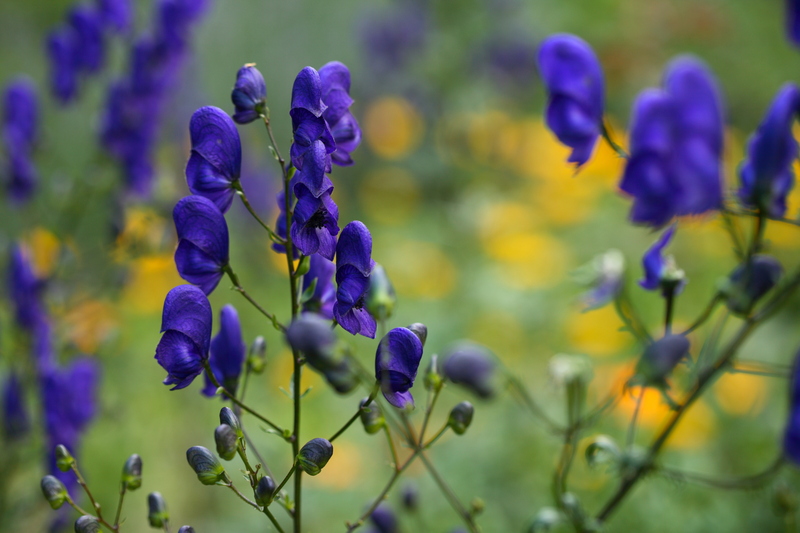Mastering the Art of Hedge Trimming with Style
Posted on 21/06/2025
Mastering the Art of Hedge Trimming with Style
Hedge trimming is both a craft and a practical garden necessity. From classic topiary to lush, privacy-enhancing boundaries, mastering this skill elevates your curb appeal, transforms your outdoor space, and provides a satisfying creative outlet. If you're eager to master the art of hedge trimming with style, you're in the right place. In this comprehensive guide, we'll explore everything from tools and techniques to creative design inspirations, ensuring your hedges are the talk of the neighborhood.
Understanding the Importance of Stylish Hedge Trimming
Trimming hedges goes beyond mere maintenance. Proper and stylish hedge trimming:
- Promotes healthy plant growth and disease resistance
- Creates eye-catching garden borders and privacy screens
- Reflects your personality and creativity in outdoor spaces
- Enhances property value and neighborhood aesthetics
Learning to trim hedges with creative flair can truly transform your landscape. Let's explore the essentials you'll need to get started:

The Essential Tools for Hedge Trimming Mastery
Your journey towards artistic hedge trimming starts with assembling the right tools:
Manual Hedge Trimmers
- Bypass shears: Perfect for small, precise cuts and delicate shaping.
- Lopping shears: Ideal for thicker branches and rejuvenation pruning.
- Topiary shears: Designed for creating elegant, curved shapes or intricate details.
Powered Hedge Trimmers
- Electric or battery-powered trimmers: Great for most home gardens, offering ease and consistency.
- Gas-powered trimmers: Best for large properties and thick, woody hedges requiring power and endurance.
Additional Supplies
- Protective gear (gloves, goggles, ear protection)
- Measuring tape and stakes for layout and symmetry
- String or chalk line to ensure straight, crisp edges
- Ladders or step stools for taller hedges
Invest in high-quality, well-maintained equipment for professional results and safety.
Choosing the Right Hedge for Stylish Trimming
To successfully master the art of hedge trimming with an artistic touch, start with the appropriate plant. Not all hedges are equally suited for detailed or ornamental shaping:
- Boxwood (Buxus) – The classic topiary plant, small-leaved, dense, and forgiving.
- Yew (Taxus) – Hardy, slow-growing, and ideal for formal lines and shapes.
- Privet (Ligustrum) – Fast-growing, great for privacy hedges or flowing, organic forms.
- Holly (Ilex) – Offers texture with evergreen foliage and decorative berries.
- Lonicera (Honeysuckle) – Good for informal, fragrant hedges in cottage gardens.
Tip: Assess sun, soil, and local climate when selecting your hedge species for optimal growth and shape retention.
Perfect Timing: When to Trim Hedges for Best Results
Timing is critical when aiming to trim hedges stylishly while safeguarding plant health:
- Deciduous hedges — Trim in late spring or early summer, after active growth begins.
- Evergreen hedges — Best trimmed in early spring or late summer, avoiding harsh frost or extreme heat.
Regular, light trims encourage dense, polished growth, while heavy pruning is best reserved for early spring before the growth flush.
Fundamental Techniques for Stylish Hedge Trimming
Establishing Straight Lines and Even Surfaces
Nothing says 'professional' like crisp, straight hedge lines:
- Use a string, laser level, or chalk line to outline your desired shape.
- Trim from the bottom up, checking regularly for symmetry and flatness.
- Step back often to assess your work from multiple vantage points.
Patience and precision pay off with geometric, eye-catching results.
Creating Curves and Topiary Forms
- Sketch the outline on paper or use wire frames for complex shapes like spirals, cones, or animals.
- Start with rough cuts, then refine with smaller, precise snips.
- For curves, pivot from a central anchor point, maintaining consistent radius and angle.
Bold statement hedges serve as living sculptures, bringing unique character to any landscape.
Maintaining Hedge Health and Density
- Base wider than top: Always shape hedges so the base is slightly wider than the top, ensuring lower branches receive sunlight.
- Remove dead or diseased growth: This encourages healthy, stylish regrowth.
- Don't overcut: Avoid pruning too deep into old wood, as some shrubs may not recover.
Healthy, well-shaped hedges are the cornerstone of elegant garden design.
Styles and Design Inspirations for Hedge Trimming
Classic and Contemporary Hedge Shapes
- Formal lines & flat tops: Elegant boundaries for traditional spaces.
- Curved waves or domes: Softens geometry and adds organic flow.
- Spiral and geometric topiary: Advanced, eye-catching styles for standout gardens.
- Tapered edges or cloud pruning: Japanese-inspired artistry for Zen landscapes.
Mix and match shapes to create depth, movement, and distinct garden 'rooms.'
Integrating Hedges with Other Garden Features
- Frame entryways or highlight walkways with symmetrical, trimmed hedges.
- Use staggered or varied heights for a layered effect with flower beds or stone features.
- Combine hedges with ornamental trees or perennial borders for year-round interest.
Hedge trimming artistry shines brightest when it complements its surroundings.
Common Mistakes in Hedge Trimming and How to Avoid Them
Over-trimming or Trimming at the Wrong Time
- Avoid cutting into old wood where new buds won't sprout.
- Don't prune during drought, heatwaves, or in freezing conditions.
Ignoring Plant Health
- Sanitize tools between cuts and plants to prevent disease spread.
- Remove fallen clippings to discourage pests and rot.
Lack of Planning
- Start with a clear vision or sketch – impulsive cuts are hard to correct.
- Be consistent with trimming frequency to avoid uneven growth spurts.
By being mindful and prepared, you'll avoid costly errors and ensure your hedges thrive with style.
Step-by-Step Guide to Mastering Stylish Hedge Trimming
Ready to create stunning, stylish hedges? Follow this detailed process:
-
Preparation
- Gather all necessary tools: sharp, clean trimmers, stakes, strings, safety equipment.
- Assess hedge health -- look for pests, diseases, or weak spots before trimming.
-
Planning and Marking
- Decide on your preferred shape or style - flat, rounded, spiral, or custom design.
- Mark lines or curves with string so you have a clear visual guide.
-
Initial Cut
- Remove irregular protruding branches first for a rough outline.
- For significant reshaping, cut gradually over a few seasons to prevent shock.
-
Shaping and Refining
- Use long, sweeping motions with shears for straight lines or graceful curves.
- Repeat from multiple angles to prevent missed spots or lopsided shapes.
- Step back frequently and inspect from all sides for symmetry and proportion.
-
Finishing Touches
- Snip stray leaves or uneven spots for a polished, professional look.
- Clean up clippings to promote air circulation and a tidy finish.
With practice and patience, you'll master the art of stylish hedge trimming and bring your creative vision to life.
Aftercare and Long-Term Hedge Maintenance
- Water regularly, especially after heavy pruning, to promote quick recovery and lush regrowth.
- Mulch around the base to retain moisture and discourage weeds.
- Monitor for pests and treat promptly to avoid infestations.
- Feed hedges with slow-release fertilizer each spring for optimal vigor.
Continued care ensures your stylishly trimmed hedges remain healthy, dense, and beautiful year-round.
Expert Tips for Elevating Your Hedge Trimming Artistry
- Sharpen blades often for clean, precise cuts – dull blades cause ragged edges and infection.
- Experiment with new shapes and seasonal variations to keep designs fresh.
- Visit public gardens and topiary exhibits for inspiration and advanced techniques.
- Join local gardening groups or online forums for feedback and ideas.
With confidence and creativity, you can push the boundaries of traditional hedge trimming.

Frequently Asked Questions About Stylish Hedge Trimming
How often should I trim my hedges?
Most hedges benefit from two to three trims per growing season, but frequency depends on species and desired shape. Topiary or formal styles may need more frequent attention for shape retention.
What's the best way to achieve clean, sharp edges?
Use a taut string or laser level as a guide. Always trim in smooth, steady strokes, and approach the hedge from the same angle on both sides. Sharpen your tools before each session for the cleanest cuts.
Can I revive a neglected or overgrown hedge?
Yes, with patience. Start by cutting back slowly, over a couple of seasons. Avoid cutting into bare wood unless you know the plant tolerates it, and fertilize to encourage new growth. Some species, like boxwood and privet, recover well, while others may need replanting.
Are power trimmers better for stylish shaping?
Power trimmers are efficient for straight edges and long runs, but hand shears offer more precision for intricate designs and finishing touches. Many expert gardeners use both, starting with power tools and refining with manual shears.
Conclusion: Cultivating Your Signature Hedge Trimming Style
Whether you prefer timeless, formal lines or bold, sculptural artistry, mastering the art of hedge trimming with style is a rewarding journey. It strengthens your gardening skills, enhances your landscape's beauty, and expresses personal creativity.
By choosing the right tools, timing, and techniques, and by embracing ongoing learning and experimentation, you'll achieve stunning, healthy hedges that set your property apart. Start your artistic hedge trimming adventure today, and let your garden become a living masterpiece!

